The nose plays a crucial role in overall facial harmony, significantly impacting one’s appearance. Its size and shape can either emphasize or detract from other facial features. A bulbous nose refers to a condition where the end of the nose is excessively rounded or bulging, often throwing off facial symmetry.
A bulbous nasal tip can be particularly bothersome, making the nose appear larger than it is. Rhinoplasty, specifically bulbous nose reduction, is a surgical procedure designed to refine and reshape the nasal tip, enhancing overall facial balance.
Key Takeaways
- Understanding the causes and effects of a bulbous nose on facial harmony.
- Exploring the transformative effects of bulbous nose reduction procedures.
- Learning about both surgical and non-surgical approaches to refining the nasal tip.
- Gaining insights into the recovery process and timeline for results.
- Understanding the importance of selecting a qualified surgeon for this delicate procedure.
Understanding Bulbous Nasal Tips
A bulbous nasal tip can significantly affect the overall appearance of the nose and facial harmony. The term bulbous nasal tip refers to a nose tip that is excessively round, bulging, and/or heavy in appearance.
What Defines a Bulbous Nose Tip
A bulbous nasal tip is characterized by its excessive roundness, width, or projection at the end of the nose. This creates a disproportionate appearance compared to other nasal features. Medical professionals diagnose this condition by examining the lower lateral cartilages, which appear more convex and prominent than in a more refined nasal structure.
- Excessive roundness or width of the nasal tip
- Prominent lower lateral cartilages
- Disproportionate appearance compared to other nasal features
Impact on Facial Harmony
Facial harmony depends on balanced proportions between all features, with the nose serving as the central anchor point for overall facial aesthetics. A bulbous tip can draw unwanted attention to the nose, creating visual imbalance and potentially diminishing the prominence of other attractive facial features.
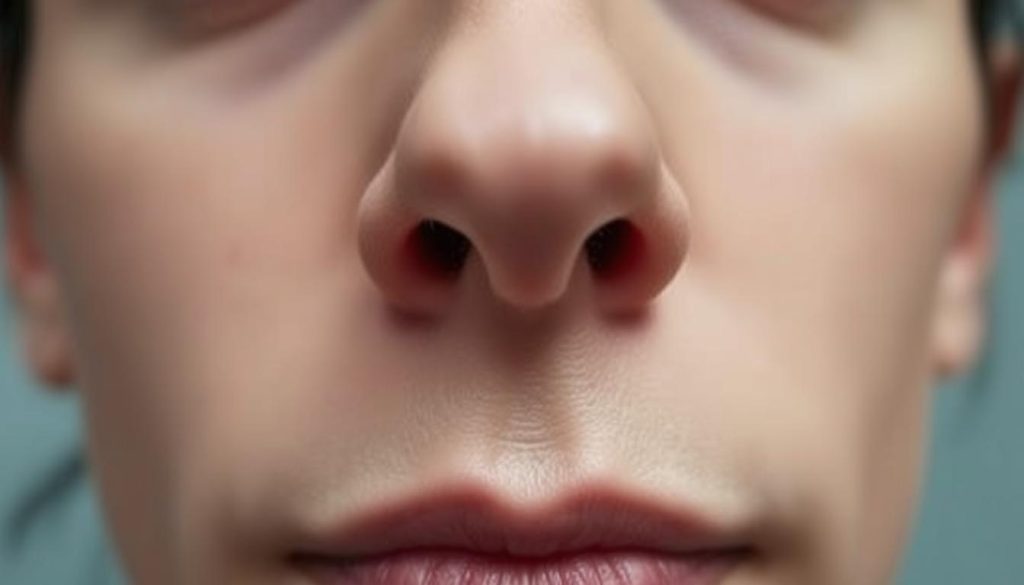
Many patients report that their bulbous nasal tip makes their nose appear larger overall, even when other aspects of the nose are proportionate. Achieving a more refined nasal tip can enhance facial harmony and overall aesthetic appeal.
Common Causes of Bulbous Nasal Tips
The appearance of a bulbous nose tip is often influenced by a combination of genetic and anatomical factors. Understanding these causes is essential for individuals considering bulbous nose reduction surgery.
Genetic and Structural Factors
Genetic predisposition plays a significant role in the development of bulbous nasal tips. Certain ethnic backgrounds have a higher prevalence of this nasal structure due to inherited traits. Family history is also a crucial factor, as nasal shape and cartilage characteristics are often passed down through generations.
Structural factors, including the size and arrangement of the lower lateral cartilages, directly influence the appearance of the nasal tip. Oversized or widely positioned cartilages can create a bulbous effect.
Cartilage Shape and Position
The shape and position of the nasal cartilage significantly impact the definition of the nasal tip. A bulbous nasal tip typically has convex cartilage, which bends outward, lending to a round and heavy appearance. In contrast, noses with an ideal straight-edged shape have flat or slightly concave lower lateral cartilages.
The position of the nasal cartilage, particularly when it is positioned more vertically or cephalically, can create a fuller appearance at the tip. Thick sebaceous skin covering the nasal tip can also contribute to a bulbous appearance by adding volume and obscuring the definition of underlying cartilage structures.
| Cause | Description | Effect on Nasal Tip |
|---|---|---|
| Genetic Predisposition | Inherited traits influencing nasal structure | Increased likelihood of bulbous nasal tip |
| Cartilage Shape | Convex cartilage bending outward | Round and heavy appearance |
| Thick Sebaceous Skin | Adding volume and obscuring cartilage definition | Bulbous appearance |
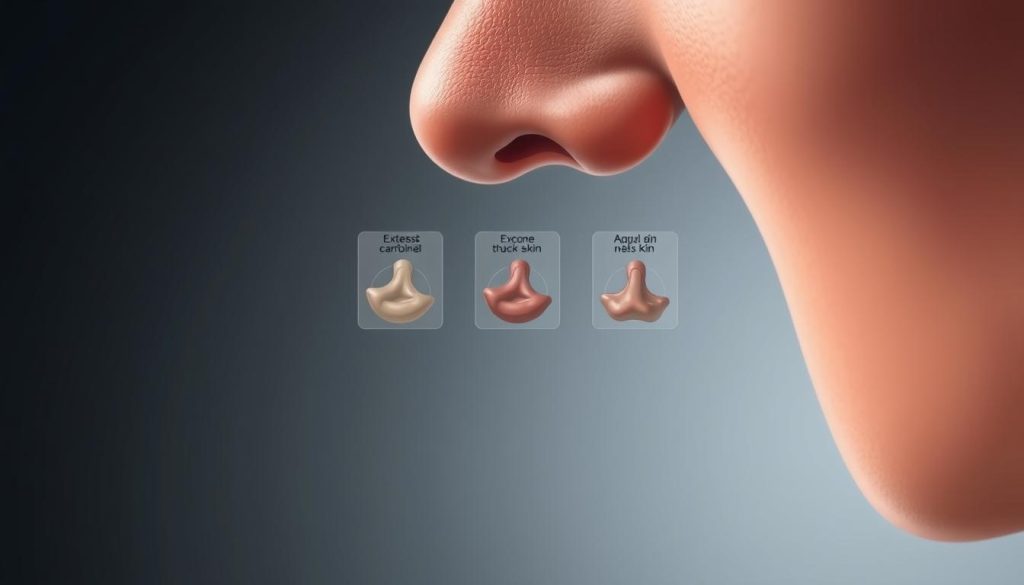
Bulbous Nose Reduction Procedure Explained
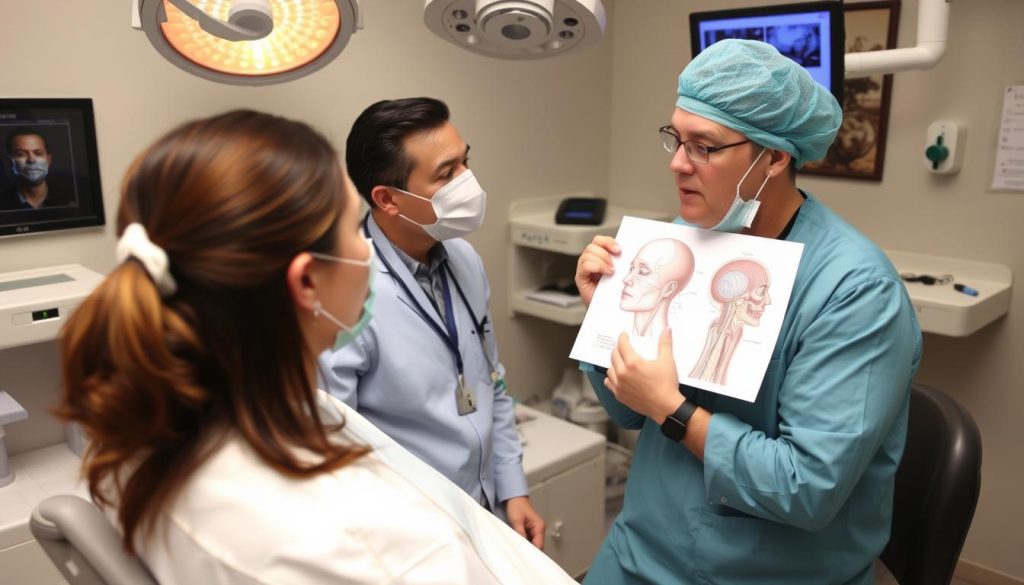
The procedure for bulbous nose reduction encompasses various surgical approaches, each designed to address the unique aspects of a patient’s nasal anatomy. Tip rhinoplasty is a specialized form of rhinoplasty that focuses on refining the nasal tip.
Surgical Techniques for Tip Refinement
Surgical techniques for tip refinement include suture reshaping, cephalic trimming, and cartilage grafting. These methods allow surgeons to modify the lower lateral cartilages, creating a more refined and proportionate nasal tip.
- Bulbous nose reduction surgery involves precise modification of the lower lateral cartilages.
- Surgeons employ suture reshaping to narrow the tip.
- Cephalic trimming reduces the width of the lower alar cartilages.
Open vs. Closed Rhinoplasty Approaches
The choice between open and closed rhinoplasty depends on the complexity of the case. Open rhinoplasty provides full visibility of nasal structures but leaves a small scar, while closed rhinoplasty uses internal incisions, leaving no visible scarring.
Dr. Cangello utilizes state-of-the-art rhinoplasty techniques, such as the endonasal approach, to refine a bulbous nasal tip without compromising the patient’s underlying nasal structure.
Before and After: Realistic Expectations
Achieving the desired shape and appearance of the nose after bulbous nose reduction requires patience and understanding of the recovery process. Patients should be aware that the final results take time to manifest.
Typical Results Timeline
Initial results from bulbous nose reduction become visible once post-surgical swelling begins to subside, typically within 2-3 weeks after the procedure. During this period, the nasal tip starts to take on its new shape, and patients can begin to see the improvement in the nose appearance.
The final refined shape continues to develop over 6-12 months as all residual swelling resolves. It’s essential for patients to understand that the recovery process is gradual, and the full results of the nose job may take several months to be fully apparent.
Factors Affecting Your Final Outcome
Several factors can influence the final outcome of bulbous nose reduction. The thickness of a patient’s nasal skin significantly impacts the results, with thicker skin potentially limiting the degree of refinement possible and extending the timeline for final results.
- The skill and experience of the surgeon directly correlates with outcome quality, particularly in the delicate work of tip refinement.
- Patient compliance with post-operative instructions significantly affects healing and the final aesthetic result, making follow-up care an essential component of successful outcomes.
- Age plays a role in healing and results, with younger patients typically experiencing faster recovery and more predictable outcomes due to better skin elasticity.
By understanding these factors and having realistic expectations, patients can better appreciate the changes in their nose appearance and shape following bulbous nose reduction.
The Consultation Process for Bulbous Nose Reduction
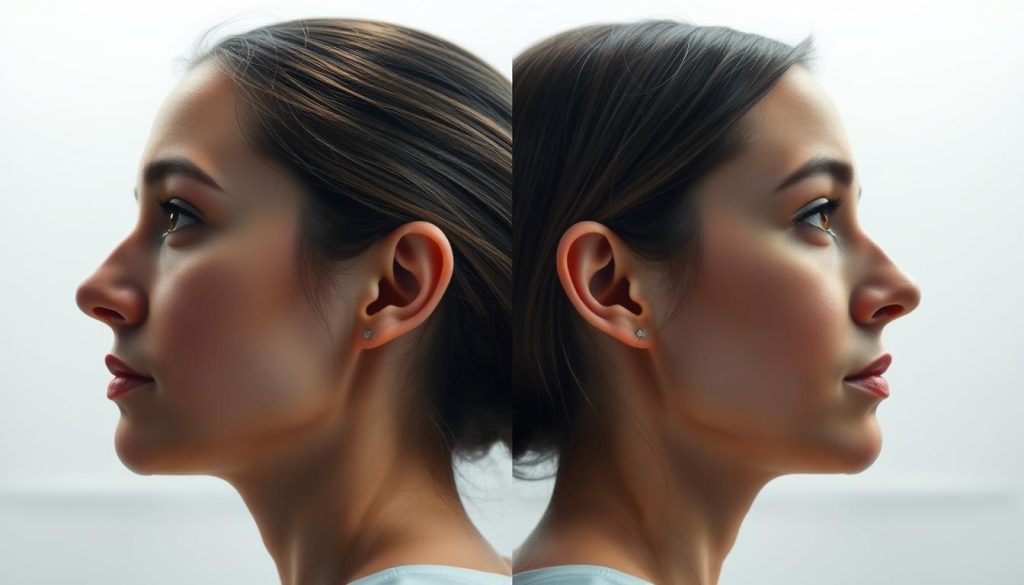
The journey to a refined bulbous nose tip begins with a comprehensive consultation. During this initial meeting, the surgeon evaluates the patient’s nasal structure, skin thickness, and overall facial proportions to determine the best approach for bulbous nose reduction.
What to Discuss With Your Surgeon
Patients should come prepared to discuss their specific concerns about their bulbous nose and desired outcomes, ideally with reference photos that illustrate their aesthetic goals. Important topics to discuss include surgical approach options, recovery timeline, potential risks, and the surgeon’s experience specifically with bulbous tip refinement.
Preparing for Your Consultation
To make the most of the consultation, patients should be forthcoming about their medical history, previous nasal surgeries, breathing difficulties, and any medications or supplements they take regularly. Preparing questions in advance about technique, facility accreditation, anesthesia options, and total cost ensures that patients gather all necessary information to make an informed decision about their rhinoplasty procedure.
Recovery After Bulbous Nose Reduction
Following bulbous nose reduction surgery, patients must focus on a smooth recovery to achieve the best possible results. The recovery process involves several key steps and considerations to ensure optimal healing and minimal complications.
Week-by-Week Recovery Timeline
The recovery timeline after bulbous nose reduction surgery can be broken down into several stages:
- The first week typically involves moderate swelling, bruising, and discomfort, with patients wearing a nasal splint for protection and support.
- Weeks 2-3 show significant improvement as initial swelling subsides, the splint is removed, and patients can generally return to work and light social activities.
- By weeks 4-6, most visible bruising has resolved, though the nasal tip remains somewhat swollen and firm to the touch.
- Months 2-3 bring continued refinement as tip swelling gradually decreases, with approximately 70-80% of the final result becoming visible.
- Complete recovery with final results typically takes 9-12 months, as the last subtle swelling in the nasal tip fully resolves.
Post-Operative Care Instructions
To ensure a smooth recovery, patients should follow specific post-operative care instructions. Rest is crucial in the first 24 hours, with the head kept elevated to reduce swelling. An ice glove compress can be used up to five times a day to control inflammation. It’s also important to avoid blowing the nose for about two weeks and to refrain from sports and extreme activities for the first three months after the procedure
By carefully following these guidelines and the surgeon’s instructions, patients can minimize the risk of complications and achieve the desired outcome from their bulbous nose reduction surgery.
Non-Surgical Alternatives for Bulbous Nose Refinement

Liquid rhinoplasty has emerged as a popular non-surgical solution for individuals looking to refine their bulbous nose tip. This procedure involves the use of dermal fillers to create the illusion of a more defined nasal tip.
Liquid Rhinoplasty Options
Liquid rhinoplasty offers a non-surgical option for mild to moderate bulbous tip refinement. It uses injectable dermal fillers, such as Juvederm, to create shadows and highlights that visually slim and refine the tip’s appearance. The treatment is quick, taking 15-30 minutes, and provides immediate results that can last 9-18 months.
Limitations of Non-Surgical Approaches
While non-surgical approaches offer convenience, they have limitations. They cannot actually reduce the size of a truly bulbous tip, as fillers can only add volume rather than remove excess tissue or reshape cartilage. Liquid rhinoplasty is best suited for patients with mild tip fullness or those who want to “test drive” a new nose shape before committing to surgery.
It’s essential to understand that the temporary nature of fillers means ongoing treatments are necessary to maintain results. This could potentially make surgical correction more cost-effective long-term. Additionally, non-surgical options carry their own risks, including vascular complications if fillers are improperly placed in the nasal area’s rich blood supply.
Finding the Right Surgeon for Your Bulbous Nose Reduction
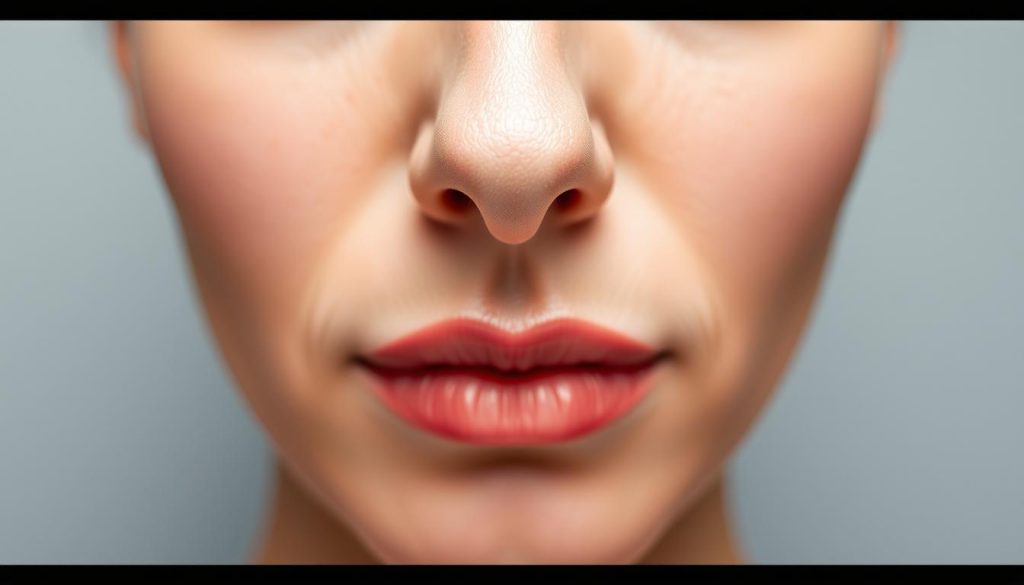
The success of a bulbous nose reduction procedure largely depends on the surgeon’s expertise. As with any surgical procedure, choosing the best plastic surgeon to perform your bulbous tip rhinoplasty is crucial. Dr. Cangello, a Board-Certified Plastic Surgeon, is renowned as NYC’s foremost rhinoplasty expert.
To ensure natural-looking results, it’s essential to select a surgeon with specialized expertise in nasal tip refinement. This delicate procedure requires both technical skill and artistic vision. Key factors to consider when choosing a surgeon include:
- Board certification in plastic surgery or otolaryngology (ENT) with additional fellowship training in facial plastic surgery.
- Experience specifically with tip rhinoplasty, as this is more relevant than overall surgical experience.
- Reviewing before and after photos of previous bulbous tip rhinoplasty patients to gauge the surgeon’s skill.
- Consulting with multiple surgeons to compare approaches and techniques.
- Patient reviews and testimonials to assess the surgeon’s bedside manner and overall patient experience.
A qualified surgeon should clearly explain their approach to bulbous tip correction and set realistic expectations based on your unique anatomy. By choosing the right surgeon, you can achieve the desired results from your bulbous nose reduction procedure.
FAQ
What is a bulbous nasal tip?
A bulbous nasal tip refers to a rounded or enlarged tip of the nose, often due to the shape and size of the underlying cartilage. This can affect the overall appearance of the nose and facial harmony.
How is tip rhinoplasty performed?
Tip rhinoplasty involves surgical techniques to refine the shape and size of the nasal tip. The procedure can be performed using either an open or closed rhinoplasty approach, depending on the individual’s nasal structure and desired outcomes.
What are the benefits of open vs. closed rhinoplasty?
The choice between open and closed rhinoplasty depends on the complexity of the procedure and the surgeon’s preference. Open rhinoplasty provides more visibility and access to the nasal structures, while closed rhinoplasty is less invasive and may result in less scarring.
How long does it take to recover from bulbous nose surgery?
The recovery process typically takes several weeks to a few months. Patients can expect swelling and bruising to subside within a few weeks, with the final results becoming apparent after several months.
Are there non-surgical alternatives to refine a bulbous nasal tip?
Yes, liquid rhinoplasty is a non-surgical option that uses dermal fillers to temporarily reshape the nasal tip. However, this approach has its limitations and may not be suitable for everyone, particularly those with significant nasal tip deformities.
What factors affect the final outcome of bulbous nose reduction?
The final outcome is influenced by factors such as the individual’s nasal structure, skin thickness, and the surgeon’s expertise. A thorough consultation is essential to discuss realistic expectations and potential results.
How do I choose the right surgeon for my procedure?
When selecting a surgeon, consider their experience, qualifications, and before-and-after photos of previous patients. A consultation is crucial to assess their approach, communication style, and whether they can meet your needs and expectations.
